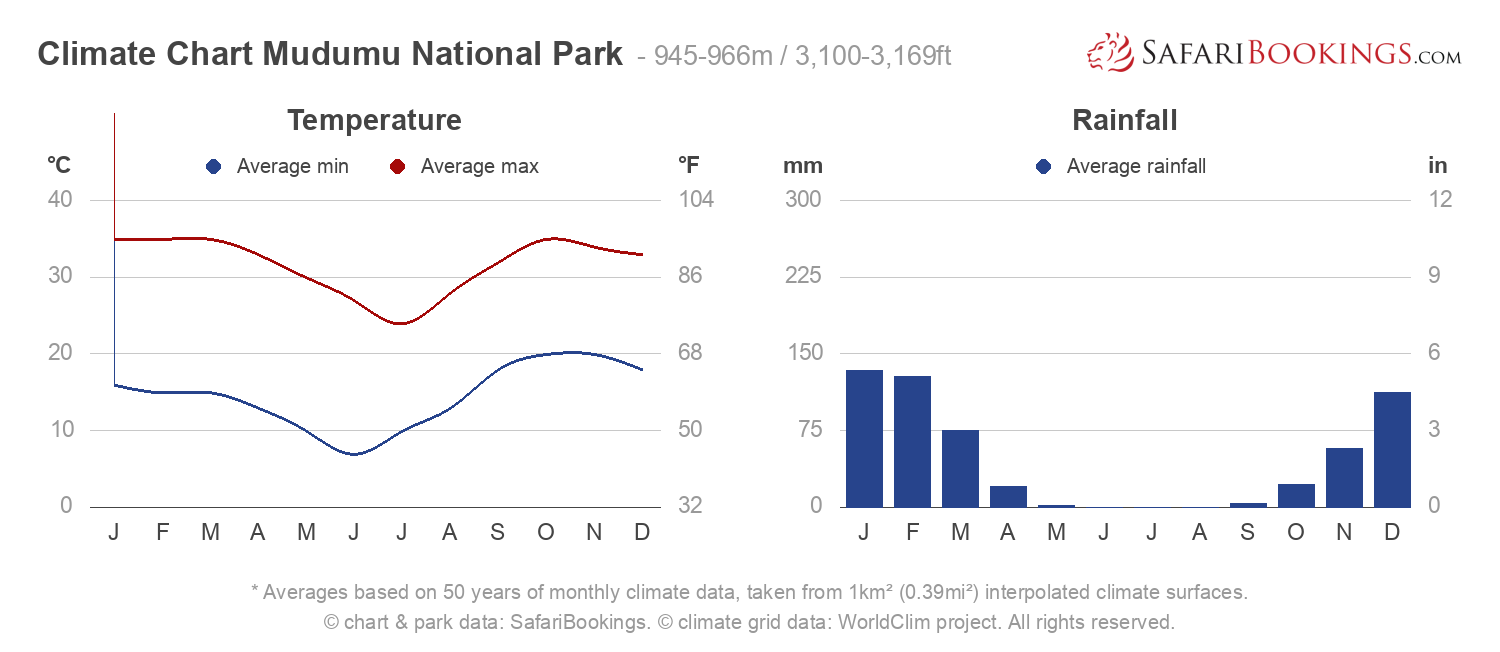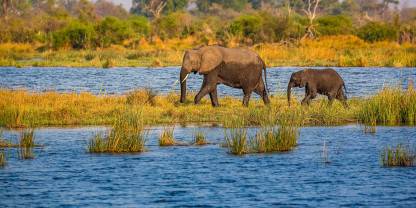
Climate Chart Mudumu National Park – 945-966m / 3,100-3,169ft
The climate in Mudumu National Park is hot and mostly dry. When rainfall occurs, it is generally in the form of afternoon thunderstorms. The summer months from November to April mark the Wet season, while the winter months from May to October represent the Dry season.
Dry Season May to October – Winter
Apart from October, these are the coolest months and the mornings get cold. There is virtually no rain throughout this period.
- May, June, July & August – Plenty of sun and dry weather is typical during these months. Afternoon temperatures usually hover around 27°C/81°F, but mornings get quite cold (especially from May to July) with temperatures averaging 10°C/50°F. Warm winter clothing is essential for early-morning .
- September & October – Temperatures start to rise in September, with early mornings often around 18°C/64°F. October is the hottest month as temperatures rise before the rains, which usually begin toward the end of October or in early November. Daytime temperatures average 35°C/95°F, although they will frequently spike higher.
Wet Season November to April – Summer
The summer months are hot, and with the heat comes the Wet season. Rainfall is not particularly high, but afternoon showers do occur. Most days are sunny and mornings are mild.
- Novermber & December – The rains usually begin in late October or early November, bringing relief from the dry conditions. Most of the day will be dry, but afternoon thundershowers are common. Daytime temperatures average 34°C/93°F.
- January, February & March – The most rain of the year falls during January and February, with afternoon showers common. Daytime temperatures hover around 35°C/95°F and drop a bit after rainfall.
- April – April sees a dramatic decrease in rainfall and temperatures begin to slowly drop as summer comes to an end.

